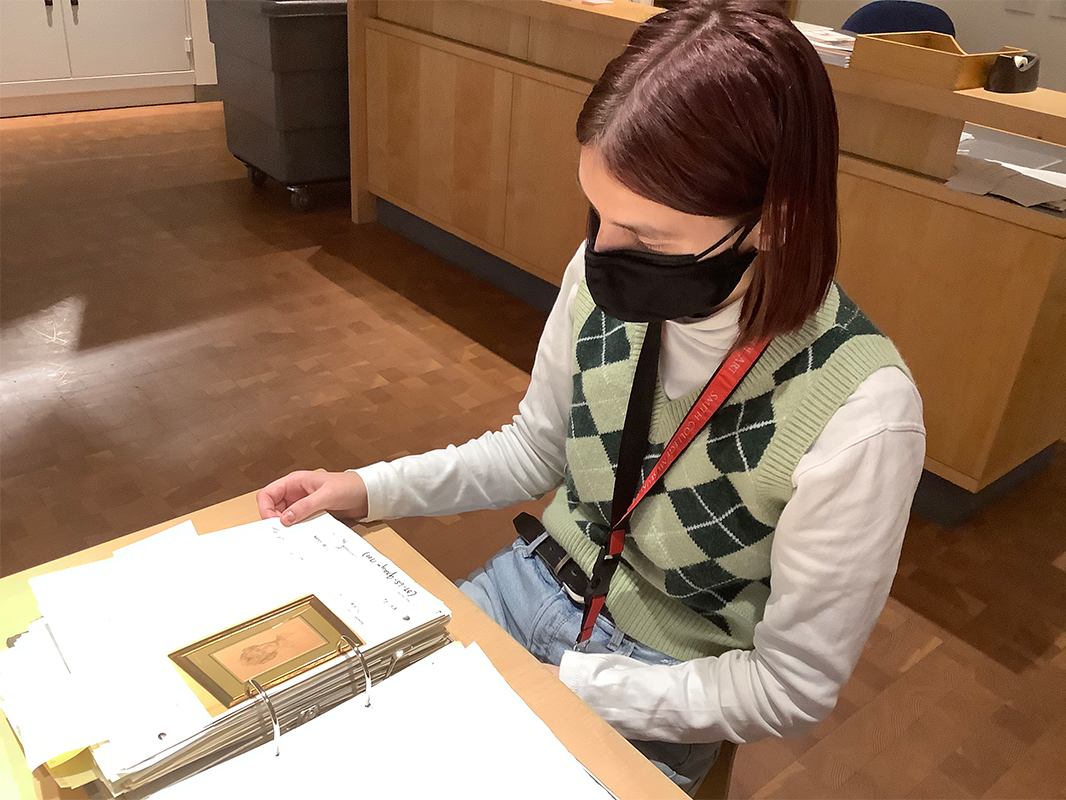
Carol O. Selle’s Collecting notebooks: a conversation between Aprile Gallant and Meredith Diamond
Aprile Gallant, senior curator of prints, drawings, and photographs, speaks with Meredith Diamond ‘23, a student assistant in the Cunningham Center for the Study of Prints, Drawings, and Photographs about the documentary notebooks that accompanied a gift of 144 drawings from Carol O. Selle ‘54.
Aprile Gallant (AG): I was really happy to see you so engaged with the content of Carol Selle’s notebooks. What drew you to them at first?
Meredith Diamond (MD): When I first began going through the notes, I was in awe of the range of artists represented in the collection, from my mother’s favorite painter, Degas, to artists I had never heard of. I was also pulled in by the little glimpses of Carol Selle’s personality. I was so intrigued by what she deemed important about each work. I began to research her and read her published essays, but something about her documentary binders felt so much more personal. Maybe it was her handwriting or her correspondence with galleries.

violin in front of a piano), Henri Matisse (1924)
SC 2020.17.17
AG: Most collectors don’t keep such detailed or well-organized records on the works in their collection. Fortunately for us, Carol Selle was trained as an art historian and had experience as a curator as well, so she clearly knew the types of information that would be helpful to people researching her collection.
MD: Yes! Each recorded work has a basic information sheet and a photo stored in the binders. On the back of the photos, it lists the artist, an inventory number, title, and location in her home. It was interesting to see where specific drawings were hung. While I am used to looking for art in the museum’s storage, Carol Selle filed her collection on her walls. Who wouldn’t want a Matisse hanging in their living room where you could see it everyday? Even though I’ve never visited her gorgeous apartment on Park Avenue, I’ve learned the pieces she surrounded herself with as she ate, the drawings she passed when she walked through the front door, the art she appreciated as she read. As I’ve worked my way through her binders, I’ve tried to imagine what living in her apartment must have been like. I can only compare it to waking up in a king-sized bed in the MoMA and making breakfast in the Guggenheim.
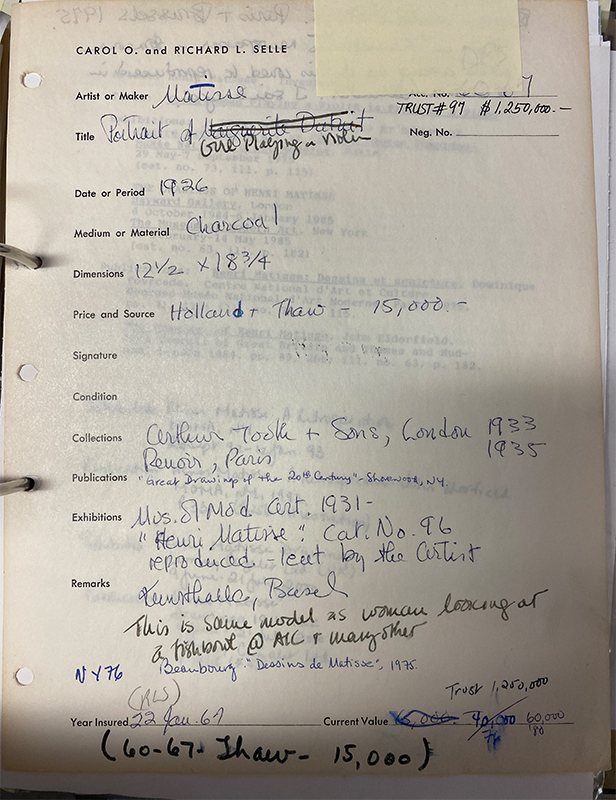
AG: It’s interesting to see the different types of records she kept, and imagining her compiling all the details. I wonder if she did it all herself or if she had help?
MD: Every once in a while, I come across several photographs of the same piece. I assume they were taken by Carol Selle herself, considering the lighting and setting, although the purpose of them is not clear. Perhaps they were informal documentation of each piece before she could get them professionally photographed. In these photos the drawings are almost always lying on her floor, so that she can take the photo from above. I find myself smiling every time her carpet peeks through in the background. I like to imagine the amateur developer who must have been tasked with printing all her film. Were they confused thinking about the woman who needed low quality prints of priceless works? Did they look forward to what the next roll of film held?
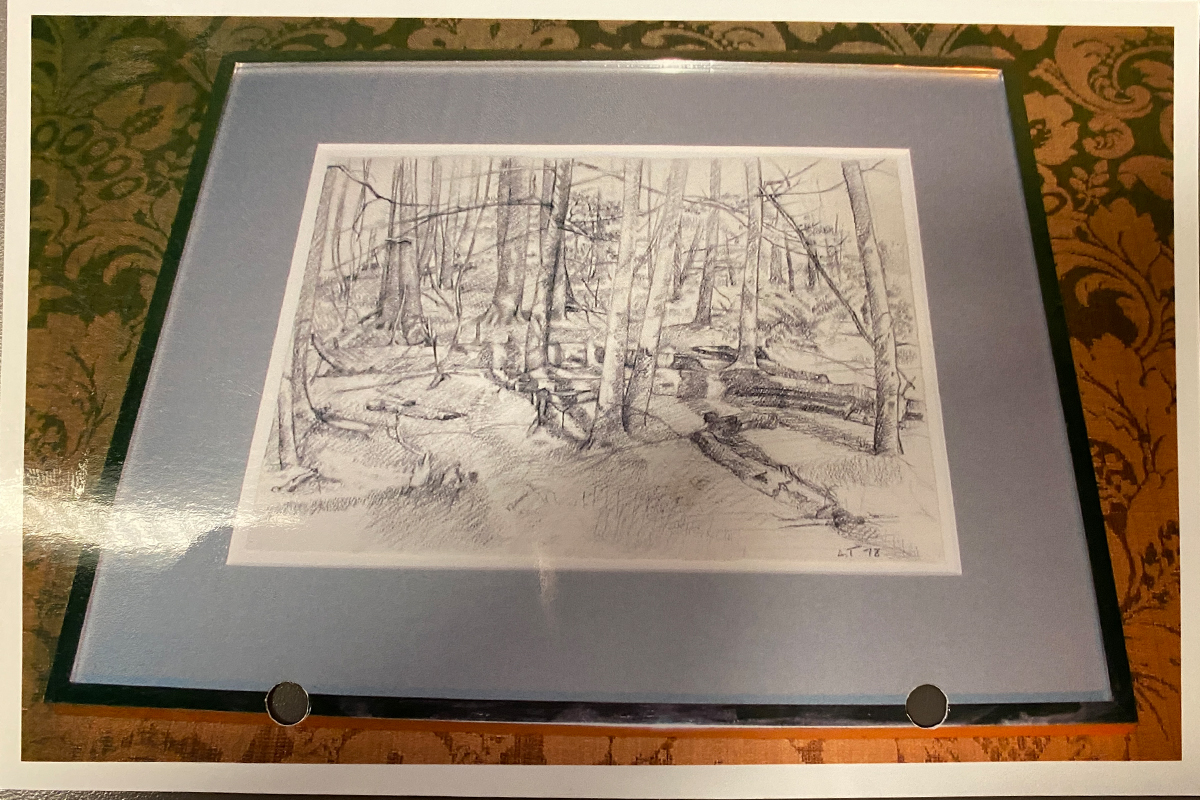
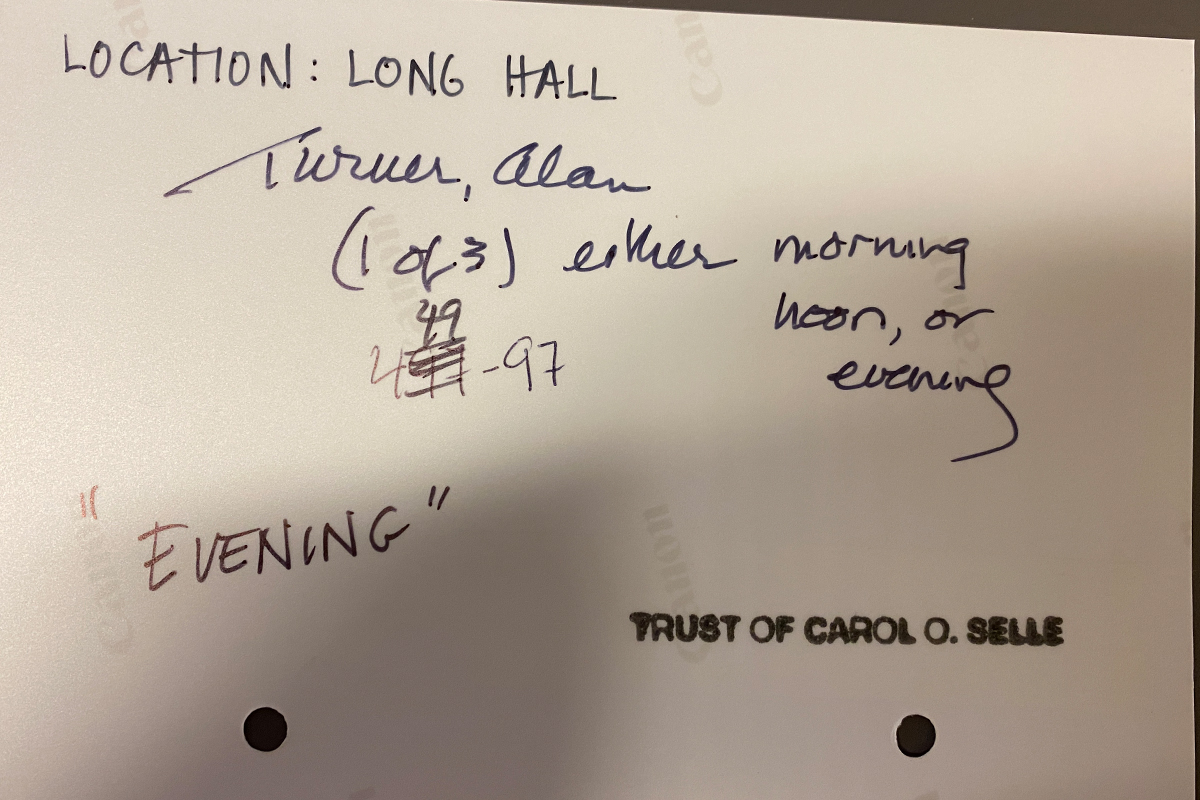
My favorite part of her documentation is the miscellaneous notes she occasionally left at the bottom of the object sheet such as “I have no idea why I would have had this framed,” or “I hate this thing -- I have no idea why I bought it.” One sheet only has the artist’s name at the top and, “Ugh,” at the bottom. Her unprotected thoughts lie on the paper; we can see Selle without the edits or formal air her correspondence with galleries contains. Did she intend for anyone to see these? Did she ever think of the SCMA staff and students who would inevitably see her musings? Or were these purely self indulgent? No matter the answer, we get a peek through a small window in her brain.
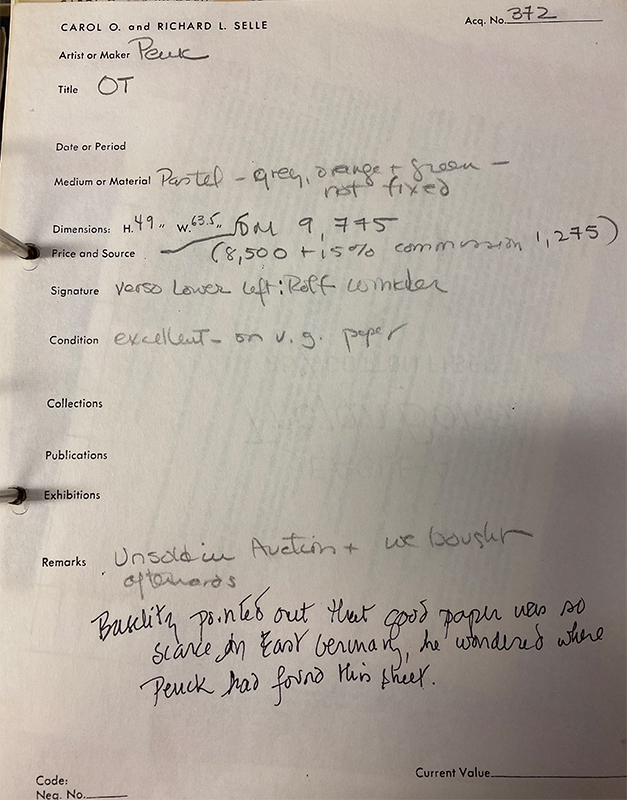
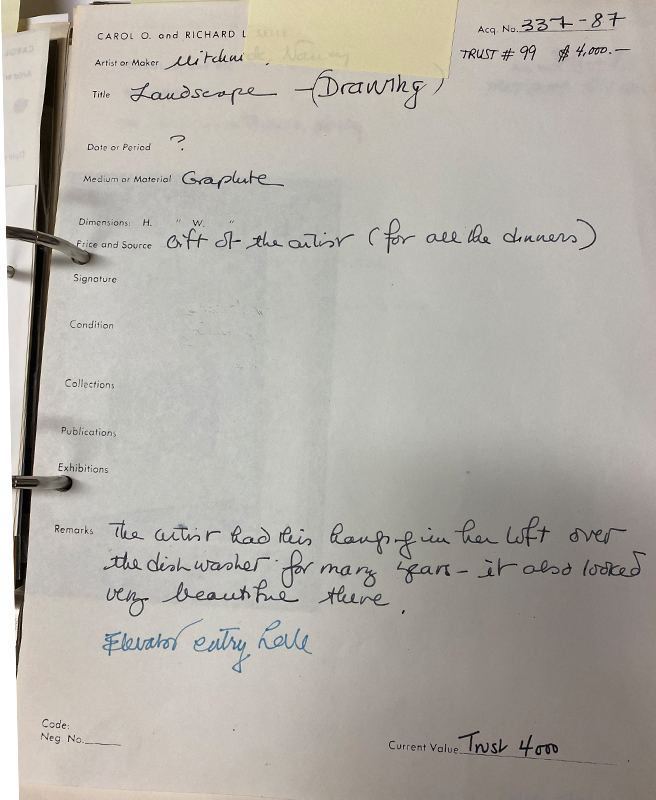
AG: Why do you think Carol Selle might have left her collection and all its documentation to SCMA and what do you think the impact of this gift might be at Smith?
MD: Smith was where Carol Selle began her collection. Leonard Baskin, a professor of art at Smith during her time here, was a collector as well, and he inspired Carol Selle to begin collecting. I believe one of the first pieces she bought was a work by Baskin. I am very thankful that her collection has been added to our own. Her passion will continue to educate and inspire students as they visit the museum and the Cunningham Center. Although my primary interests are photography and impressionism, seeing Selle’s collection has led to me research several German artists on my own time. I also have paid some special attention to her various drawings of sofas. I love that I get to be immersed in these drawings, and I’m looking forward to sharing them with the rest of the Smith community.